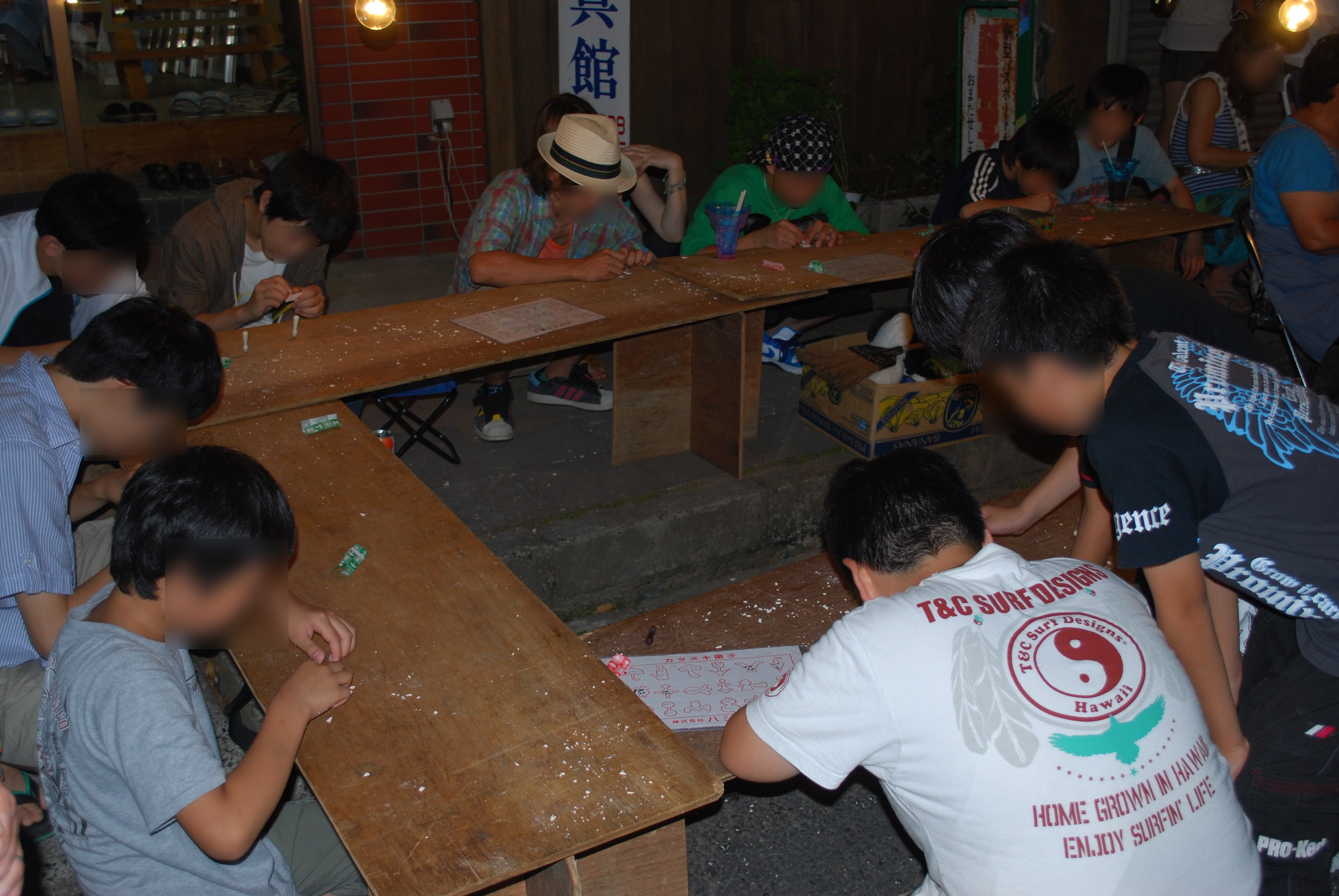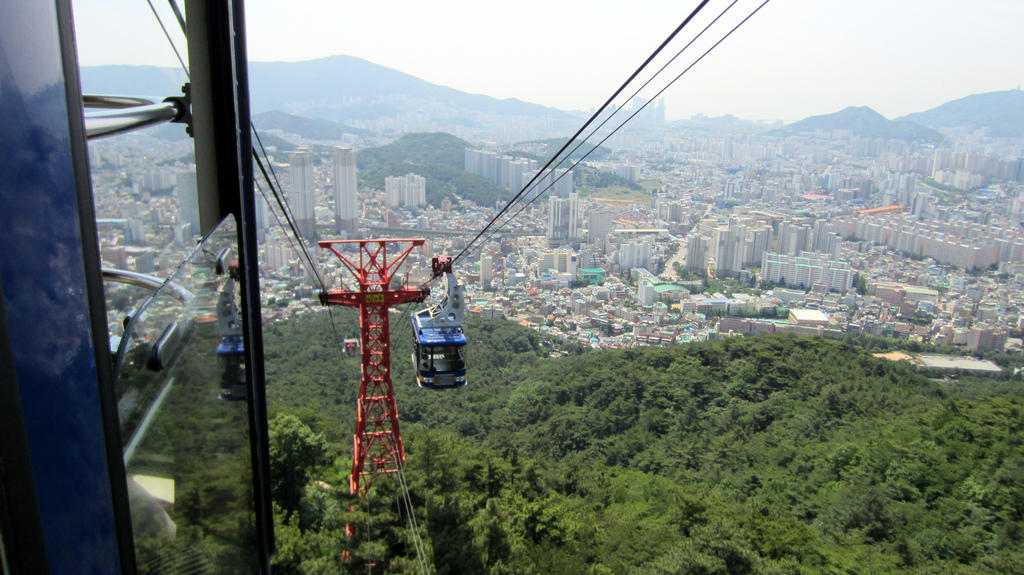|
Dalgona
''Dalgona'' () or ''ppopgi'' () is a Korean candy made with melted sugar and baking soda. It was a popular street snack in the 1970s and 1980s, and is still eaten as a retro food. When a pinch of baking soda is mixed into melted sugar, the thermal decomposition of the baking soda releases carbon dioxide, which makes the liquidized sugar puff up, and it becomes a light and crunchy candy once cooled and hardened. Typically, the creamy beige liquid is poured on a flat surface, pressed flat, and stamped with a patterned mold. Eaters try to trim their way around the outline or picture on the snack without breaking the picture. Traditionally, if this trimming is completed without breaking the candy, the consumer receives another free ''dalgona''. Modern cafes in Korea serve novel dalgona coffee beverages where ''dalgona''-flavoured coffee cream is heaped on top of iced tea or coffee, as well as pastries such as scones. Some cafes also used dalgona to launch desserts such as bingsu and ... [...More Info...] [...Related Items...] OR: [Wikipedia] [Google] [Baidu] |
Dalgona Coffee
Dalgona coffee, also known as hand beaten coffee (Chinese: ), is a beverage originating from Macau made by whipping equal parts instant coffee powder, sugar, and hot water until it becomes creamy and then adding it to cold or hot milk. Occasionally, it is topped with coffee powder, cocoa, crumbled biscuits, or honey. It was popularized on social media during the COVID-19 pandemic, when people refraining from going out started making videos of whipping the coffee at home, by hand without using electrical mixers. After the drink spread to South Korea, it was renamed "dalgona coffee" which is derived from ''dalgona'', a Korean sugar candy, due to the resemblance in taste and appearance, though most dalgona coffee does not actually contain ''dalgona''. History Creation and naming The drink is credited to Leong Kam Hon, a former Macanese shipwright who started his 'Wai Ting Coffee' (later renamed 'Hon Kee', ) shop in Coloane after a freak accident to his left arm left him incap ... [...More Info...] [...Related Items...] OR: [Wikipedia] [Google] [Baidu] |
Squid Game
''Squid Game'' () is a South Korean survival drama television series created by Hwang Dong-hyuk for Netflix. Its cast includes Lee Jung-jae, Park Hae-soo, Wi Ha-joon, HoYeon Jung, O Yeong-su, Heo Sung-tae, Anupam Tripathi, and Kim Joo-ryoung. The series revolves around a contest where 456 players, all of whom are in deep financial hardship, risk their lives to play a series of deadly children's games for the chance to win a (, , or as of broadcast) prize. The title of the series draws from a similarly named Korean children's game. Hwang had conceived of the idea based on his own economic struggles early in life, as well as the class disparity in South Korea and capitalism. Though he had initially written it in 2009, he was unable to find a production company to fund the idea until Netflix took an interest around 2019 as part of their drive to expand their foreign programming offerings. ''Squid Game'' was released worldwide on September 17, 2021, to critical accla ... [...More Info...] [...Related Items...] OR: [Wikipedia] [Google] [Baidu] |
Korean Cuisine
Korean cuisine has evolved through centuries of social and political change. Originating from ancient Prehistoric Korea, agricultural and nomadic traditions in Korea and southern Manchuria, Korean cuisine reflects a complex interaction of the natural environment and different cultural trends. Korean cuisine is largely based on rice, vegetables, seafood and (at least in South Korea) meats. Dairy is largely absent from the traditional Korean diet. Traditional Korean meals are named for the number of side dishes (반찬; 飯饌; ''banchan'') that accompany steaming, steam-cooked short-grain rice. Kimchi is served at nearly every meal. Commonly used ingredients include sesame oil, ''doenjang'' (fermented bean paste), Korean soy sauce, soy sauce, salt, garlic, ginger, ''gochugaru'' (chili pepper, pepper flakes), ''gochujang'' (fermented red chili paste) and napa cabbage. Ingredients and dishes vary by province. Many regional dishes have become national, and dishes that were on ... [...More Info...] [...Related Items...] OR: [Wikipedia] [Google] [Baidu] |
Yeontan
Yeontan () are coal briquettes used in East Asia for cooking and home heating. Made from a mixture of lignite coal dust and a gluing agent that kept the dust particles together, they are a welcome alternative to firewood and natural coal because they come in a consistent size and stack easily. There are 5 standard sizes for yeontan, and the 2nd standard is widely used in households. The 2nd standard briquette is cylindrical in shape, weighs 3.5 kg, and is about 20 cm in height and 15 cm in diameter. The standard yeontan has 22 holes drilled into its top to facilitate steady, efficient burning, and a household typically uses one to three briquettes per day in the winter. A new yeontan can be placed on one that has been burned halfway to extend the burn time. The same fire used for cooking also served to heat the house, through a Korean radiant underfloor heating system called ondol. History Introduced to Korea from Japan in the 1920s, yeontan rose in popularity following the Kor ... [...More Info...] [...Related Items...] OR: [Wikipedia] [Google] [Baidu] |
Seogwipo
Seogwipo () is the second-largest city on Jeju Island, settled on a rocky volcanic coastline in the southern part of Jeju Province, South Korea. In July 2006, Seogwipo's boundaries were expanded to include the entire southern half of Jeju island. A UNESCO World Heritage site and 2002 FIFA World Cup host, it had a population of 155,691 as of December 31, 2011. History Early history Hundreds of Seogwipo’s oldest archeological artifacts were found in Saengsugwe Cave near Cheonjiyeon Waterfall on the south coast of Jeju. After an extensive excavation by a team of experts from Jeju National Museum in November 2010, hundred of Stone Age artifacts were unearthed. Another ancient location in Seogwipo is the village of Hamo. Artifacts found there during a 2005 excavation include pieces of earthenware and shell mounds from the Neolithic Age. In the beginning, Seogwipo was a part of Tamna, an ancient kingdom of Jeju. The kingdom traded with other nations across the Korean peninsul ... [...More Info...] [...Related Items...] OR: [Wikipedia] [Google] [Baidu] |
Katanuki
''Katanuki'' ( or ), literally diecutting, is an activity common at Japanese festivals in which a colored mold of candy made of wheat flour, starch, or sugar, is carved using a needle or toothpick in the shape of an animal, star, a cherry blossom, etc. Those who are able to skillfully carve the mold receive a prize. Overview The official name for ''katanuki'' is , but it is commonly called or simply . Although it is called diecut candy, it is not made for the purpose of eating. The raw materials are indeed foodstuffs, but because it is not distributed as food, and because it is a health hazard to consume and is not particularly appetizing, it is generally not eaten. ''Katanuki'' was once a regular good carried in carts by ''tekiya'' (peddlers) on ''ennichi'' (auspicious Shinto days when festivals are often held), but at present, this is becoming less common. A long time ago, it was a side-show at picture story shows (). Aside from carts, the molds are sometimes sold at small c ... [...More Info...] [...Related Items...] OR: [Wikipedia] [Google] [Baidu] |
Jeolla Province
Jeolla Province (, ) was one of the historical Eight Provinces of Korea during the Kingdom of Joseon in today Southwestern Korea. It consisted of the modern South Korean provinces of North Jeolla, South Jeolla and Gwangju Metropolitan City as well as the Jeju Province. The provincial capital was Jeonju, the current capital of North Jeolla. The entire inland region was called Honam ("South of the Lake"), which is still commonly used today. History Samhan and Samguk During the Samhan era of Korean history, the area of Jeolla was controlled by the Mahan confederacy and the Tamna kingdom on Jeju. Fifteen of the 45 Korean tribes had their bases in this region. When Baekje overtook Mahan by the 5th century, the Three Kingdoms era began and the region became part of southern Baekje. Jungbang was the center of the province during this period. Unified Silla When Silla conquered Baekje with the help of Tang China in 660, it became a territory of Later Silla during the 16th year of the r ... [...More Info...] [...Related Items...] OR: [Wikipedia] [Google] [Baidu] |
Busan
Busan (), officially known as is South Korea's most populous city after Seoul, with a population of over 3.4 million inhabitants. Formerly romanized as Pusan, it is the economic, cultural and educational center of southeastern South Korea, with its port being Korea's busiest and the sixth-busiest in the world. The surrounding "Southeastern Maritime Industrial Region" (including Ulsan, South Gyeongsang, Daegu, and some of North Gyeongsang and South Jeolla) is South Korea's largest industrial area. The large volumes of port traffic and urban population in excess of 1 million make Busan a Large-Port metropolis using the Southampton System of Port-City classification . Busan is divided into 15 major administrative districts and a single county, together housing a population of approximately 3.6 million. The full metropolitan area, the Southeastern Maritime Industrial Region, has a population of approximately 8 million. The most densely built-up areas of the city are situat ... [...More Info...] [...Related Items...] OR: [Wikipedia] [Google] [Baidu] |
Masan
Masan is an administrative region of Changwon, a city in the South Gyeongsang Province. It was formerly an independent city from 1949 until 30 June 2010, when it was absorbed to Changwon along with Jinhae. Masan was redistricted as two districts within Changwon, Masanhappo-gu and Masanhoewon-gu. On 31 December 2012, the population of the districts combined was 406,893. Throughout Korean history, Masan served as a significant port city of Happo, which went through rapid modernization in the 19th century. It was also a stage for significant democratization movements in the 1960s and 1970s, most notable event being the Bu-Ma Democratic Protests in 1979. Due to its status as a free trade port, Masan has experienced consistent growth until the early 1990s when the construction of Changwon went underway and began to attract citizens around the region. History September 1274 – After Korean officials encouraged Kublai Khan – head of the Mongol Yuan Dynasty – in 1267 that Japa ... [...More Info...] [...Related Items...] OR: [Wikipedia] [Google] [Baidu] |
South Gyeongsang Province
South Gyeongsang Province ( ko, 경상남도, translit=Gyeongsangnam-do, ) is a province in the southeast of South Korea. The provincial capital is at Changwon. It is adjacent to the major metropolitan center and port of Busan. The UNESCO World Heritage Site Haeinsa, a Buddhist temple that houses the '' Tripitaka Koreana'' and tourist attraction, is located in this province. Automobile and petrochemical factories are largely concentrated along the southern part of the province, extending from Ulsan through Busan, Changwon, and Jinju. Etymology The name derives ; . The name derives from the names of the principal cities of Gyeongju () and Sangju (). History Before 1895, the area corresponding to modern-day South Gyeongsang Province was part of Gyeongsang Province, one of the Eight Provinces of Korea during the Joseon dynastic kingdom. In 1895, southern Gyeongsang was replaced by the districts of Jinju in the west and Dongnae (modern-day Busan) in the east. In 1896, they wer ... [...More Info...] [...Related Items...] OR: [Wikipedia] [Google] [Baidu] |





